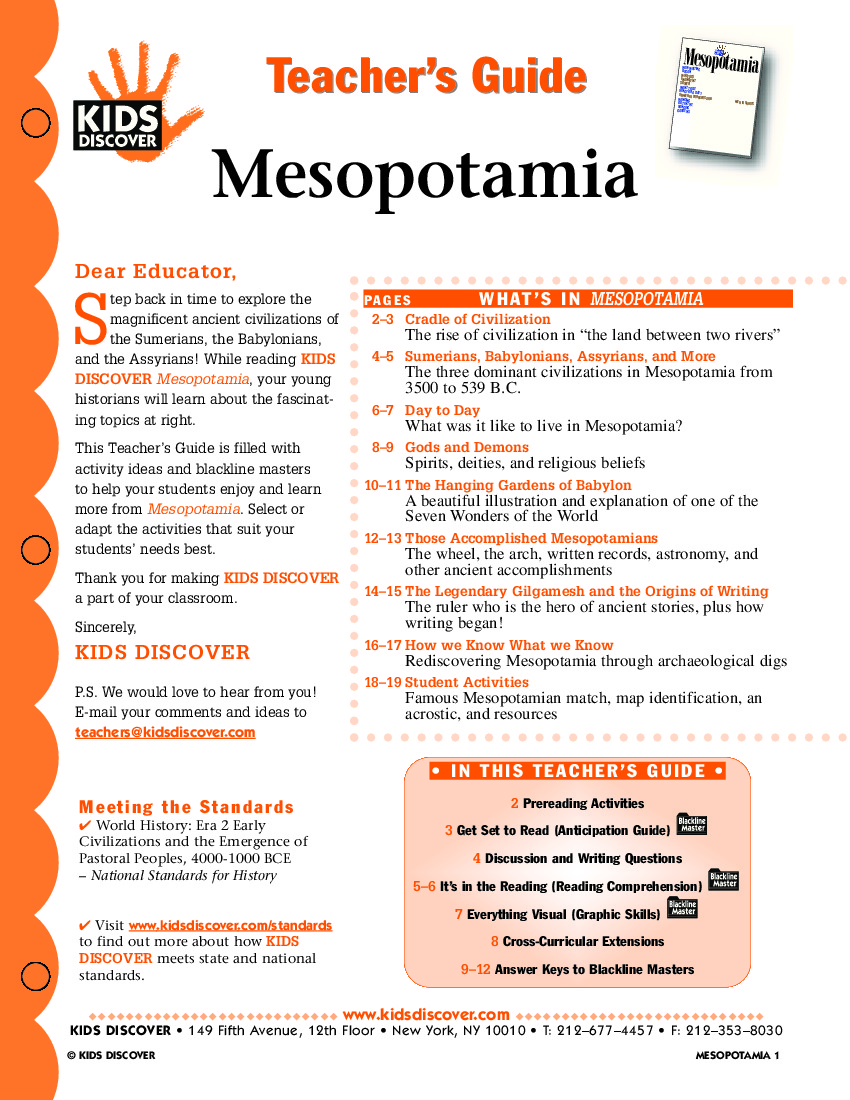We are using History Odyssey Level 2 and our study of Mesopotamia included the Sumerians, the Hittites, and the early Babylonians.
History Odyssey suggests keeping a notebook divided into sections, such as Summaries, Men & Women, Inventions, etc. where you add the information from each section. There are dictation sentences, definitions, and short answer questions. I have the kids do these activities, but we don't add them to a notebook.
Squidy answers the questions as outlined in History Odyssey, from the Kingfisher Encyclopedia. I make up additional questions for Vicki, from the Usborne Encyclopedia. They both answer the questions on index cards and we add them to our timeline book. I was glad to see that this time (unlike our previous unit on first civilizations) there was plenty of room in our timeline book. Our study of Mesopotamia actually stretched out across approximately 2000 years.
We learned about how the Sumerians were the first to develop a written language, called cuneiform, and gave it a try ourselves. Vicki wrote her name in cuneiform.
We used air-dry clay and popsicle sticks to create our tablets. We discussed the advantages and disadvantages of cuneiform and stick/clay versus our alphabet and pencil/paper.
They thought that pencil/paper was definitely easier, although the clay was "cleaner" to start all over again (just ball it up and flatten it out again). Obviously, the clay would last longer. We also discussed how the straight lines of cuneiform were much easier to put into clay than curved letters like S would be.
We picked our books based on what was available at our local library or through the Epic reading app. Our Sumerian selections:


We read about the Hittites and the Babylonians:



and the kids read about Mesopotamia on Kids Discover. I had them answer questions from the Teacher's Guide while they went through the units. This way I could be sure they were paying attention.

We finished up by reading more about the famous Babylonian king, Hammurabi.

We discussed his code, read some of his laws, and discussed whether we thought they were fair or not.
Squidy didn't think any of the ones referring to punishing a son were fair. "Not fair, I'm a son. I don't like that one".
Neither liked where the fines were 10x what was stolen, or where death was the punishment for stealing. "It's fair to be put in a cage if you rob someone, but not fair to be dead".
The doctor losing a hand if the patient dies: "depends on which hand? the one they use or the other one?". But definitely thought it was not fair if the patient might have died anyway and the doctor didn't do anything wrong.
The kids then took a crack and making up their own codes. I think in some cases they went in more of a 10 commandments direction.
We took a look at our DK Art book. It has some really nice pictures of Sumerian artifacts, like the Royal Game of Ur, the Queen's Lyre, and the Standard of Ur; the Hittite Sphinx Gate, and cuneiform tablets. I am planning a trip to the Metropolitan Museum of Art later in our studies to see the ancient art exhibits, but for now this book is a great resources.
We finished up by adding stickers to our HO wall timeline. I made up additional stickers for the events mentioned in the curriculum to use as well as the ones that came with the timeline.
We're going to take a week or two to concentrate on Science (and give time to get books from the library) and then we'll be starting on Egypt!








No comments:
Post a Comment